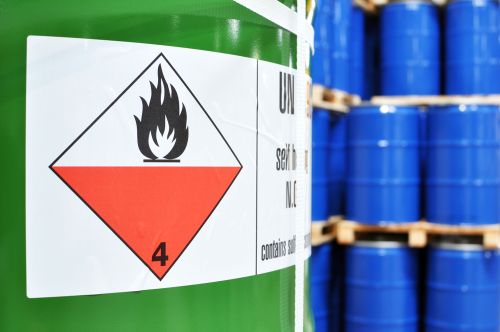An Overview of Transporting Dangerous Goods: Regulations, Responsibilities, and Best Practices
Transporting dangerous goods is a really important part of many industries in Canada. While it’s necessary for various processes, moving hazardous materials comes with significant risks. It’s crucial to have careful regulations and follow best practices. In this blog post, we’ll give you a comprehensive overview of the rules, responsibilities, and best practices involved in transporting dangerous goods within Canada. Understanding these guidelines helps businesses handle hazardous materials safely and efficiently.
Regulations for Transporting Dangerous Goods

In Canada, the Transportation of Dangerous Goods Act, 1992 (TDG Act), and its accompanying regulations govern the transportation of dangerous goods. The main regulatory body responsible for overseeing this is Transport Canada. The TDG Act is all about preventing accidents and ensuring public safety by setting strict rules for classifying, packaging, handling, and transporting hazardous materials.
The act covers a wide range of hazardous substances, including things like flammable gases, corrosive materials, infectious substances, and radioactive materials. The regulations under the TDG Act provide specific requirements for each class of dangerous goods and for different modes of transportation like road, rail, air, and marine.
Responsibilities of Shippers, Carriers, and Consignees
Several parties are involved in transporting dangerous goods, and each has specific responsibilities to make sure they comply with regulations and maintain safety throughout the process.
Shippers: Shippers are responsible for properly classifying dangerous goods, correctly identifying and labelling the packages, providing appropriate safety data sheets, and choosing suitable packaging that meets regulatory standards.
Carriers: Carriers play a crucial role in safely transporting hazardous materials. They must have trained personnel, proper equipment, and secure storage facilities to prevent leaks, spills, or accidents during transit.
Consignees: Consignees are responsible for safely receiving and storing dangerous goods according to the regulations until they’re further used or disposed of.
Best Practices for Transporting Dangerous Goods

To maintain safety standards and reduce risks, businesses involved in transporting dangerous goods should follow these best practices:
- Employee Training: Make sure all personnel involved in the transportation process receive appropriate training on handling, emergency response procedures, and compliance with the TDG Act.
- Proper Packaging: Always use approved and appropriate packaging for different classes of dangerous goods to prevent leakage or spillage.
- Secure Transportation: Load and fasten hazardous materials securely during transportation to prevent movement and potential damage.
- Emergency Response Planning: Develop comprehensive emergency response plans to deal with potential accidents, spills, or leaks during transportation.
- Regular Inspections: Conduct routine inspections of vehicles and equipment to ensure they meet safety standards and are in good working condition.
- Compliance Audits: Regularly review and audit transportation processes to verify compliance with regulations and identify areas for improvement.
Advanced CT – CPO Approved Safety Consulting & Training
Transporting dangerous goods is a critical aspect of many industries in Canada, but it comes with inherent risks that demand strict regulations and adherence to best practices. Complying with the Transportation of Dangerous Goods Act and its regulations is not only a legal obligation but also a moral responsibility to protect the safety of people and the environment. By understanding and following the guidelines outlined in this blog post, businesses can ensure the safe and efficient movement of hazardous materials, contributing to a safer and more sustainable transportation landscape in Canada.
Please contact us for training in the transport of dangerous goods. Advanced CT is Ontario’s leader in workplace safety training. Our training courses are comprehensive and flexible to meet all requirements and fit into any schedule. We also provide online training courses for circumstances that need them. Get in touch with us ASAP to elevate your workplace safety and improve your handling of dangerous goods in transit.

